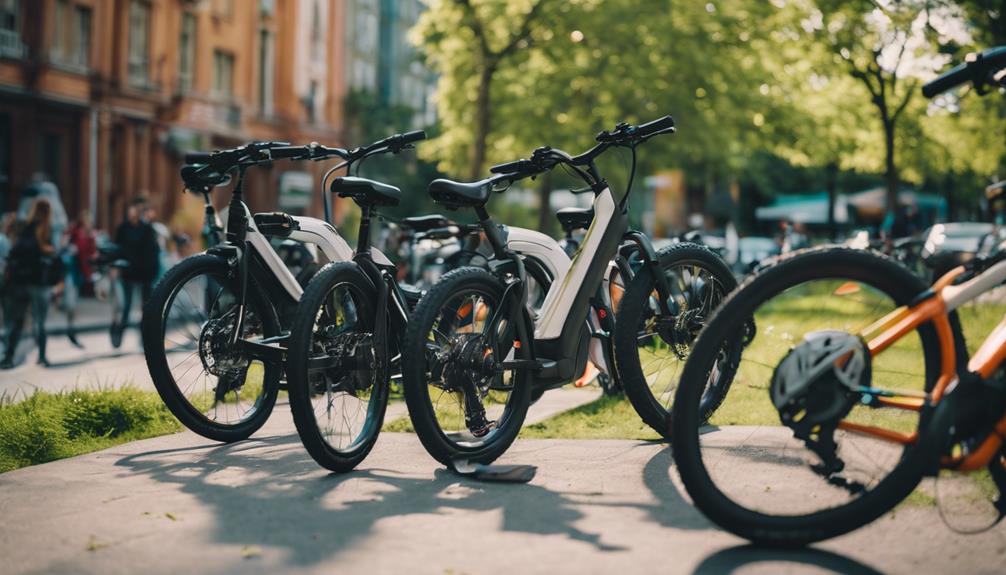In recent years, the world has witnessed a significant shift towards sustainable transportation solutions, with the rise of pure electric bikes (e-bikes) leading this charge. As cities become more congested and environmental concerns mount, pure electric bikes are emerging as a versatile and eco-friendly alternative to traditional modes of transport. This article delves into the benefits, challenges, and future of pure electric bikes, providing insights that underscore their growing popularity.
Understanding Pure Electric Bikes
Pure electric bikes are defined as bicycles equipped with an electric motor that provides propulsion entirely through battery power, without the need for human pedaling. This distinguishes them from pedal-assist e-bikes, which require the rider to pedal to engage the motor.
Key characteristics of pure electric bikes include:
- Electric Motor: Provides full power to drive the bike.
- Battery: Stores electrical energy, typically lithium-ion, offering various ranges based on capacity.
- Controls: Often equipped with user-friendly interfaces to monitor speed, battery life, and other metrics.
The Advantages of Pure Electric Bikes
Pure electric bikes bring a plethora of benefits that appeal to a wide range of users, from casual riders to daily commuters. Here are some of the primary advantages:
1. Environmental Benefits
One of the most compelling reasons to adopt pure electric bikes is their minimal environmental impact:
- Zero Emissions: Pure electric bikes produce no tailpipe emissions, contributing to improved air quality.
- Reduced Carbon Footprint: By replacing car trips with bike rides, users can significantly lower their carbon emissions.
- Energy Efficiency: E-bikes are more energy-efficient than cars, often requiring less energy per mile traveled.
2. Cost-Effectiveness
While the initial investment in a pure electric bike can be higher than a traditional bicycle, the long-term savings can be substantial:
- Lower Operating Costs: E-bikes require less maintenance than cars and have lower fuel costs (electricity vs. gasoline).
- Potential Tax Incentives: Many regions offer tax breaks or subsidies for electric vehicle purchases, including e-bikes.
- Reduced Parking Fees: E-bikes can be parked in bike racks for free, avoiding costly parking fees associated with cars.
3. Health and Fitness
Contrary to the belief that e-bikes promote laziness, they can encourage physical activity:
- Accessible Exercise: E-bikes make cycling accessible to a broader audience, including those with mobility issues or those new to cycling.
- Customizable Workout: Riders can control the level of assistance from the motor, allowing for a workout that suits their fitness level.
- Reduced Stress: Cycling can relieve stress, and the enjoyment of e-biking can enhance mental well-being.
Challenges Facing Pure Electric Bikes
Despite their numerous advantages, pure electric bikes face several challenges that could hinder their widespread adoption:
1. Infrastructure Limitations
Many urban areas lack the necessary infrastructure to support e-bike usage, including:
- Dedicated Bike Lanes: Insufficient bike lanes can make riding unsafe, deterring potential users.
- Charging Stations: Limited access to charging stations can create anxiety about battery life and range.
- Storage Facilities: Inadequate bike parking and storage options can discourage commuting by e-bike.
2. Regulatory Hurdles
In some regions, regulations regarding e-bikes can be confusing or overly restrictive:
- Classification Issues: Variations in how e-bikes are classified can impact where they can be used legally.
- Speed Limits: Some jurisdictions impose speed limits on e-bikes, which can limit their utility for commuting.
- Licensing and Insurance: In certain areas, e-bike riders may be required to obtain licenses or insurance, adding to the complexity of ownership.
Case Studies: Cities Embracing Electric Bikes
Several cities around the globe are leading the way in adopting pure electric bikes as part of their urban transportation strategy:
Amsterdam, Netherlands
Amsterdam is renowned for its cycling culture, and the city has embraced e-bikes as a sustainable transport solution:
- Infrastructure Investment: The city has invested heavily in bike lanes and e-bike charging stations.
- Public E-Bike Share Programs: Initiatives such as “OV-fiets” allow users to rent e-bikes for short trips, promoting their use among residents and tourists alike.
San Francisco, USA
San Francisco has also seen a surge in e-bike usage, particularly among commuters:
- Subsidized E-Bikes: The city offers subsidies for low-income individuals to purchase e-bikes, increasing accessibility.
- Integration with Public Transport: E-bikes are integrated into the public transport system, allowing users to combine biking with transit.
The Future of Pure Electric Bikes
As technology continues to evolve, the future of pure electric bikes looks promising:
- Advancements in Battery Technology: Innovations are leading to lighter, longer-lasting batteries, improving the overall performance of e-bikes.
- Smart Features: The integration of smart technology will enhance user experience, with features like GPS tracking, theft prevention, and health monitoring.
- Increased Adoption: As urban areas focus on sustainable transportation, e-bikes are likely to become a staple of city commuting.
Conclusion
The rise of pure electric bikes represents a transformative shift in urban mobility. With their environmental benefits, cost-effectiveness, and ability to promote healthier lifestyles, e-bikes are becoming an integral part of the solution to urban transportation challenges. However, for e-bikes to reach their full potential, cities must address infrastructure limitations and regulatory hurdles. By investing in the necessary support systems and fostering a culture that embraces sustainable transportation, we can pave the way for a future where pure electric bikes are a common sight on our roads.
In summary, as societies grapple with the pressing issues of congestion and climate change, pure electric bikes offer a viable, sustainable, and enjoyable alternative to conventional transportation methods. The momentum behind e-bikes is undeniable, and as more individuals and cities recognize their potential, we can expect to see a significant shift toward greener urban mobility solutions.
